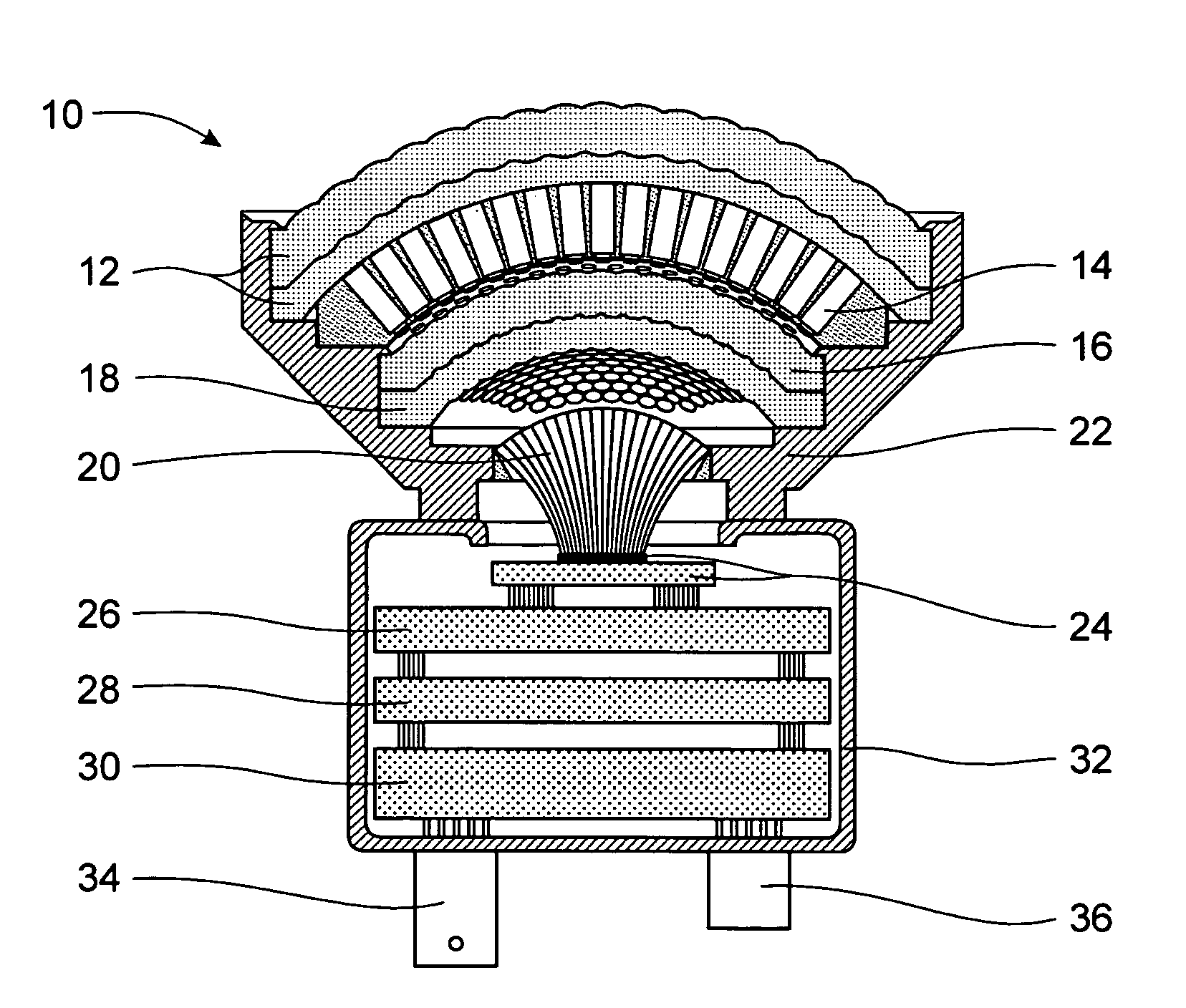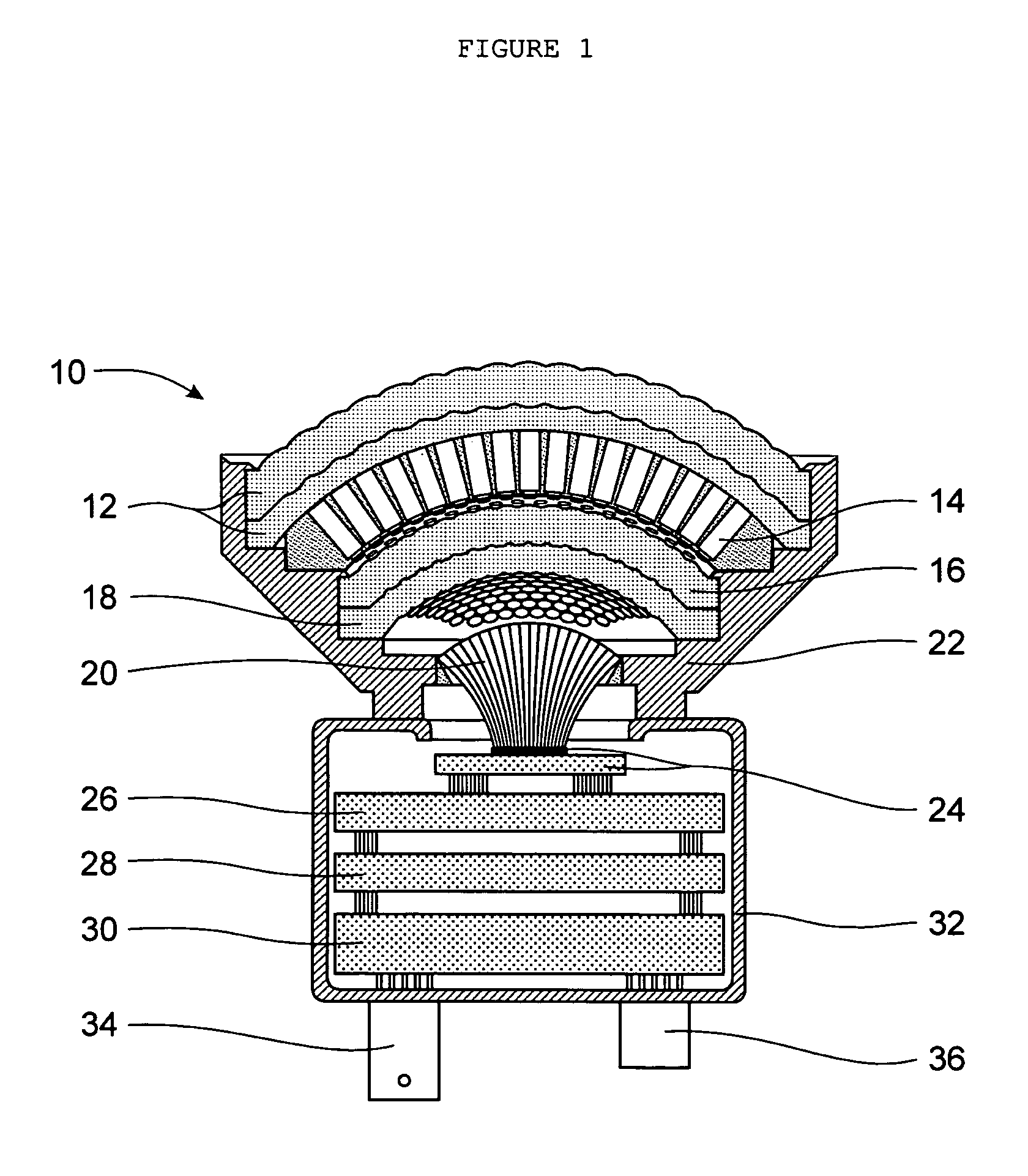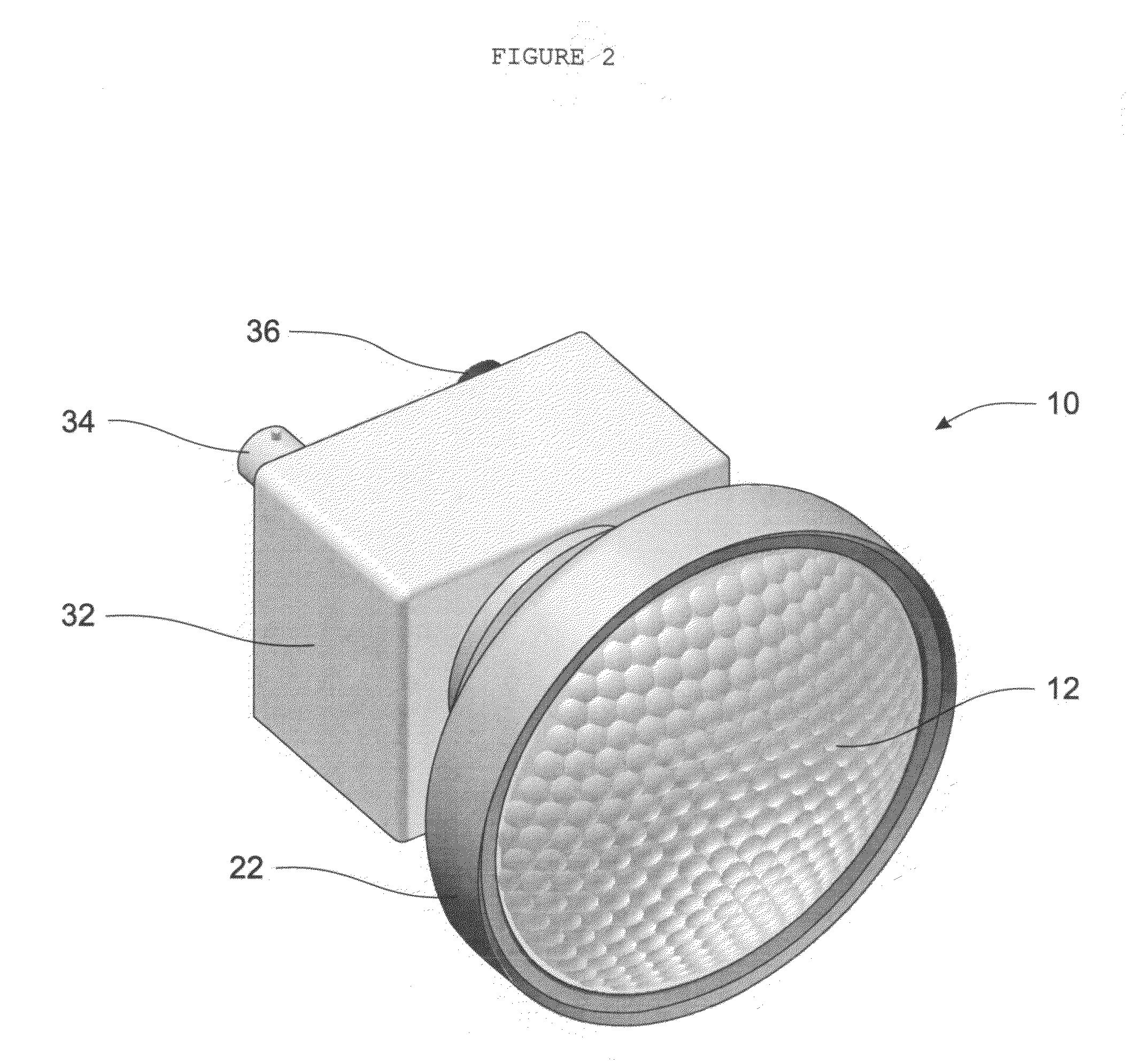Hybrid fiber coupled artificial compound eye
a compound eye and fiber technology, applied in the field of wide angle imaging systems, can solve the problems of limited field of view, large size of lens, and inability to adjust the focus of image objects, so as to increase the diameter of lenslet arrays, increase the throughput of hybrid arrays, and increase the effect of lenslet diameters
- Summary
- Abstract
- Description
- Claims
- Application Information
AI Technical Summary
Benefits of technology
Problems solved by technology
Method used
Image
Examples
Embodiment Construction
[0041]Referring now to the drawings, FIG. 1 is a cross-sectional view of a hybrid superposition-apposition array imaging system 10, the preferred embodiment of the hybrid fiber coupled artificial compound eye invention. It includes an objective lenslet superposition array 12, a louver baffle 14, a field lenslet superposition array 16, and an erector lenslet apposition array 18, all held rigidly in alignment by an optical mounting structure 22. Each lenslet array is shaped conformally to a positive meniscus base with curvatures that are concentric. Likewise, the louver baffle 14 is shaped into a positive meniscus form that is concentric to the base curvatures of the lenslet arrays. The convex surface of the baffle conforms exactly to the concave surface of the objective superposition array to which it is in contact.
[0042]Attached to the optical mounting structure 22 is the electronics mounting structure 32, which supports a fiber optic imaging taper 20 and a mosaic detector array wit...
PUM
 Login to View More
Login to View More Abstract
Description
Claims
Application Information
 Login to View More
Login to View More - R&D
- Intellectual Property
- Life Sciences
- Materials
- Tech Scout
- Unparalleled Data Quality
- Higher Quality Content
- 60% Fewer Hallucinations
Browse by: Latest US Patents, China's latest patents, Technical Efficacy Thesaurus, Application Domain, Technology Topic, Popular Technical Reports.
© 2025 PatSnap. All rights reserved.Legal|Privacy policy|Modern Slavery Act Transparency Statement|Sitemap|About US| Contact US: help@patsnap.com



